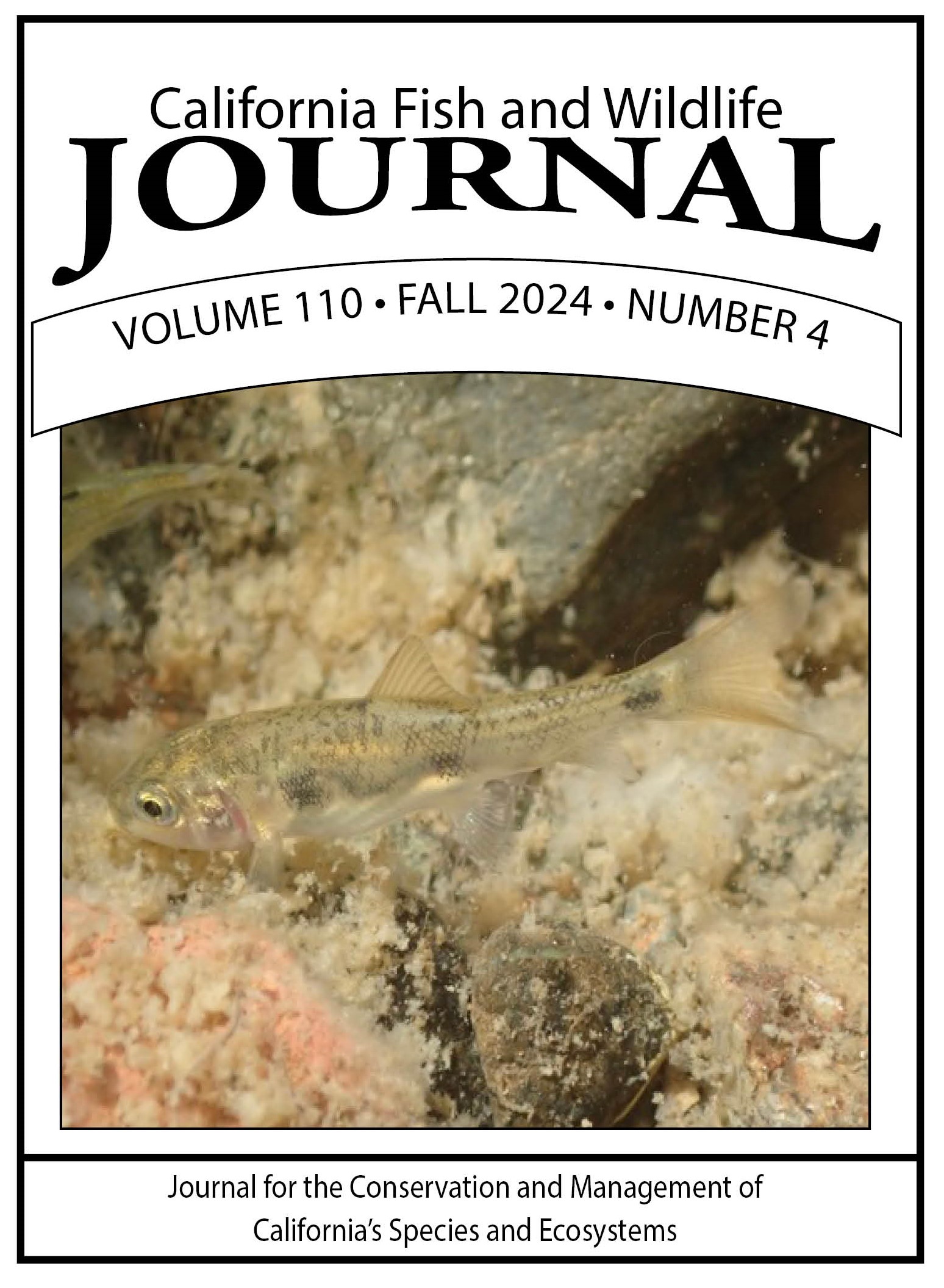
California Fish and Wildlife is CDFW's official, quarterly, peer-reviewed scientific journal devoted to the conservation and understanding of the flora and fauna of California and surrounding areas, and the eastern Pacific Ocean.
Did you know? The California Fish and Wildlife Journal (formerly California Fish and Game) is California's longest-running, continuously published scientific journal.
Publication began in 1914, and in 2014, on the 100-year anniversary, the Journal began electronic publication in an effort to more readily disseminate information. All material posted on the website is available at no charge to scientists world-wide. Each issue of the journal is available to everyone in electronic format immediately when published online. To access issues of the Journal, please visit our Contents page.
Aim and Scope
The California Fish and Wildlife Journal (CFWJ) welcomes submissions on the biology, ecology, and/or management of fish, wildlife, and plants in California and surrounding areas as well as manuscripts focused on new research tools and techniques relevant to conservation and management of the state's fish and wildlife resources. California is the most biodiverse state in the nation, and CFWJ prides itself in contributing to the conservation and management of the state's natural resources.
Submissions are open to all researchers. No affiliation with CDFW is required.
The Science Institute houses the Journal and supports its online presence and expansion of its state-wide reach and impacts. It also encourages the peer-reviewed journal to serve as a primary outlet for the CDFW science community to share their work.
All information published in CFWJ is considered public domain. Preservation and archival by Portico. This is an open access journal. Users have the right to read, download, copy, distribute, print, search, or link to the full texts of articles in this journal, crawl them for indexing, pass them as data to software, or use them for any other lawful purpose.
The views, opinions, and conclusions within the content of this publication are solely the authors’ and do not necessarily reflect those of the California Department of Fish and Wildlife.
For more information on types of manuscripts we accept, please see our submission guidelines.